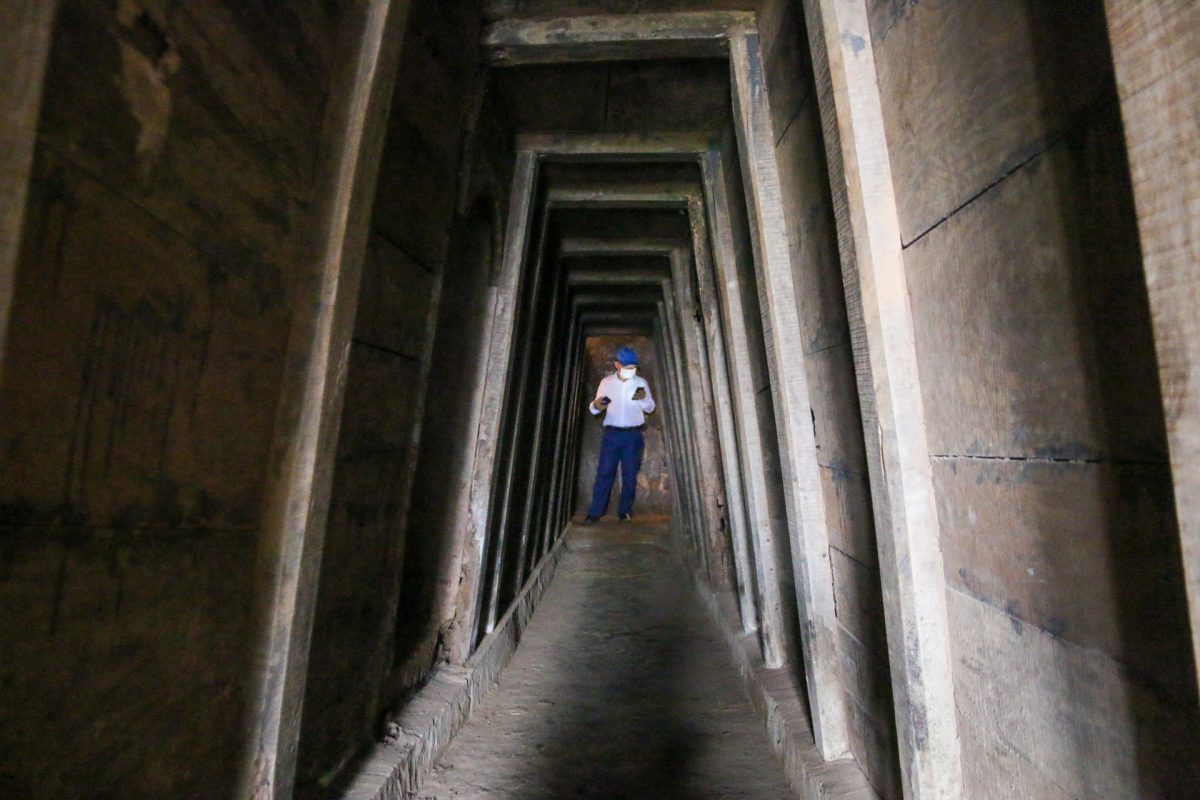Last Updated: 11/12/2024.
Vinh Moc Tunnels is a historical and cultural relic of great significance, a magnificent underground structure where the heroic people of Vinh Linh lived and fought for national independence. Despite nearly half a century having passed since the war, the memories of a glorious era linger here, recalling a fierce period in Vietnamese history. In the following article, HueTransferService will introduce this historical site!
Introduction to Vinh Moc Tunnels
Vinh Moc Tunnels, also known as Vinh Moc Underground Tunnels, are located in Vinh Moc village, Vinh Thach commune, Vinh Linh district, Quang Tri province. The tunnels are approximately 10km from National Highway 1A and 35km from the center of Dong Ha city. They were a combined military and civilian structure during the Vietnam War, built by the Republic of Vietnam (South Vietnam) to defend against attacks from the Republic of Vietnam (South Vietnam) and the United States.
The Vinh Moc Tunnels are situated on a red soil hill along the coast, 7km north of Cua Tung beach, 30km west of Con Co island, and 13km southeast of Ho Xa town.
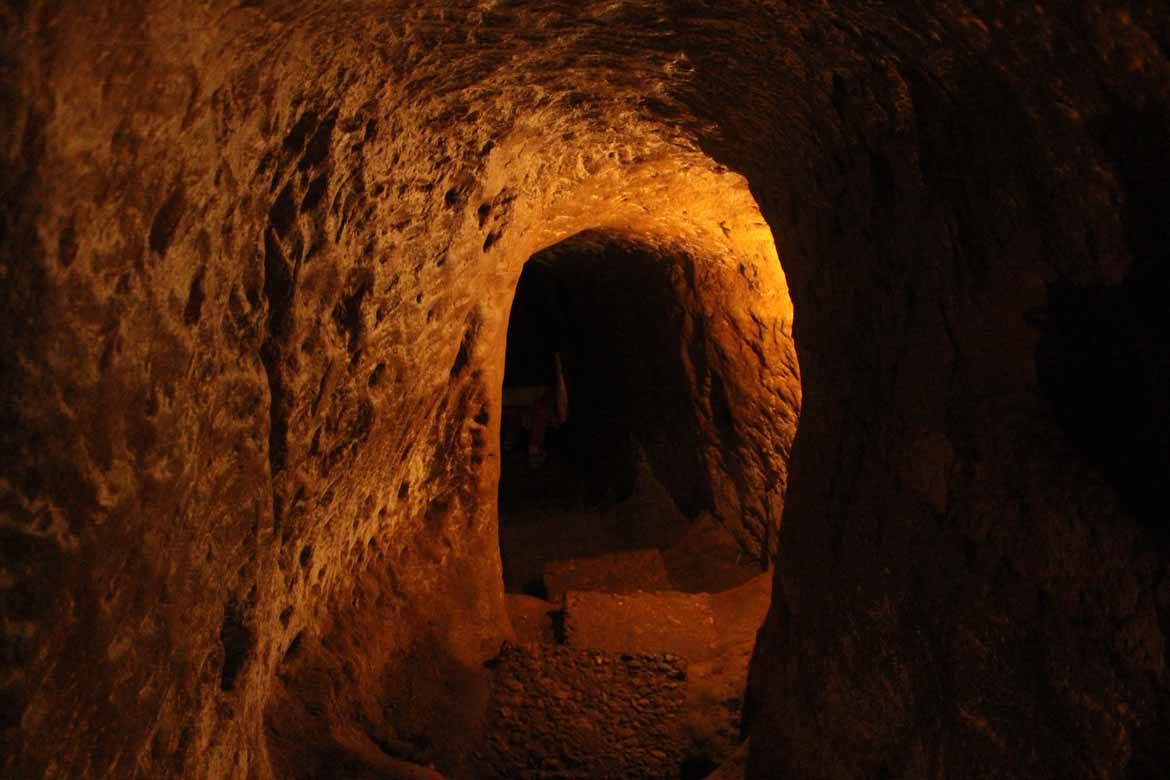
This tunnel system existed north of the Ben Hai River and Hien Luong Bridge during the years 1965-1972.
Despite the severe bombing by American air forces and artillery, the people and soldiers of Vinh Linh remained resolute with the spirit of “not an inch of land surrendered, not a grain of rice abandoned.” They constructed underground living quarters, kitchens, communal areas, hospitals, and more.
The Vinh Moc Tunnels are likened to a medieval castle underground, representing one of the greatest engineering achievements of the 20th century, where hundreds of people endured more than 2,000 days and nights during the storms of bombs and bullets.
Getting to Vinh Moc Tunnels
Vinh Moc Tunnels are located 101km from Hue City, along a tourist route where visitors can also stop to explore other historical sites such as La Vang Sanctuary and Quang Tri Old Citadel.
From Dong Hoi City, Vinh Moc Tunnels are approximately 80km away. Positioned between Hue and Quang Binh, you can choose to travel by car or motorbike if you enjoy adventure trips.
Recognized for its significant historical value, in 19756, the Ministry of Culture, Sports and Tourism designated Vinh Moc Tunnels as a National Historical and Cultural Monument.
You can book Hue Transfer Service’s private car service for a trip to Vinh Moc Tunnels. Our professional driver will pick you up at your hotel in Hue, take you to visit Vinh Moc Tunnels, and after your tour, return you to Hue. Book your trip from Hue to Vinh Moc Tunnels by private car transfer today.
The best time to visit Vinh Moc Tunnels
Located in Quang Tri, Vinh Moc Tunnels experience a tropical monsoon climate. The best time to visit Vinh Moc Tunnels is during the dry season from March to September. During this period, the weather is sunny, dry, and cool.
Ticket Prices for Vinh Moc Tunnels
- The entrance fee for Vinh Moc Tunnels is 50,000 VND per person.
- Opening Hours: Vinh Moc Tunnels are open for visitors from 7:00 AM to 5:00 PM.
The history of Vinh Moc Tunnels
The Vinh Moc Tunnels system was constructed over approximately 2 years from 1965 to 1967. During the war in 1966, when American forces heavily bombed the northern area, the people of Vinh Linh district began digging into the red laterite soil continuously for 2 years.
To preserve lives, cling to the land, and ensure continuous supply lines to the southern battlefields, the people of Quang Tri built shelters, notably the type known as “A tunnels”. These tunnels were primarily built to shelter the majority of the population working on the supply route from Con Co islands located 28km offshore.
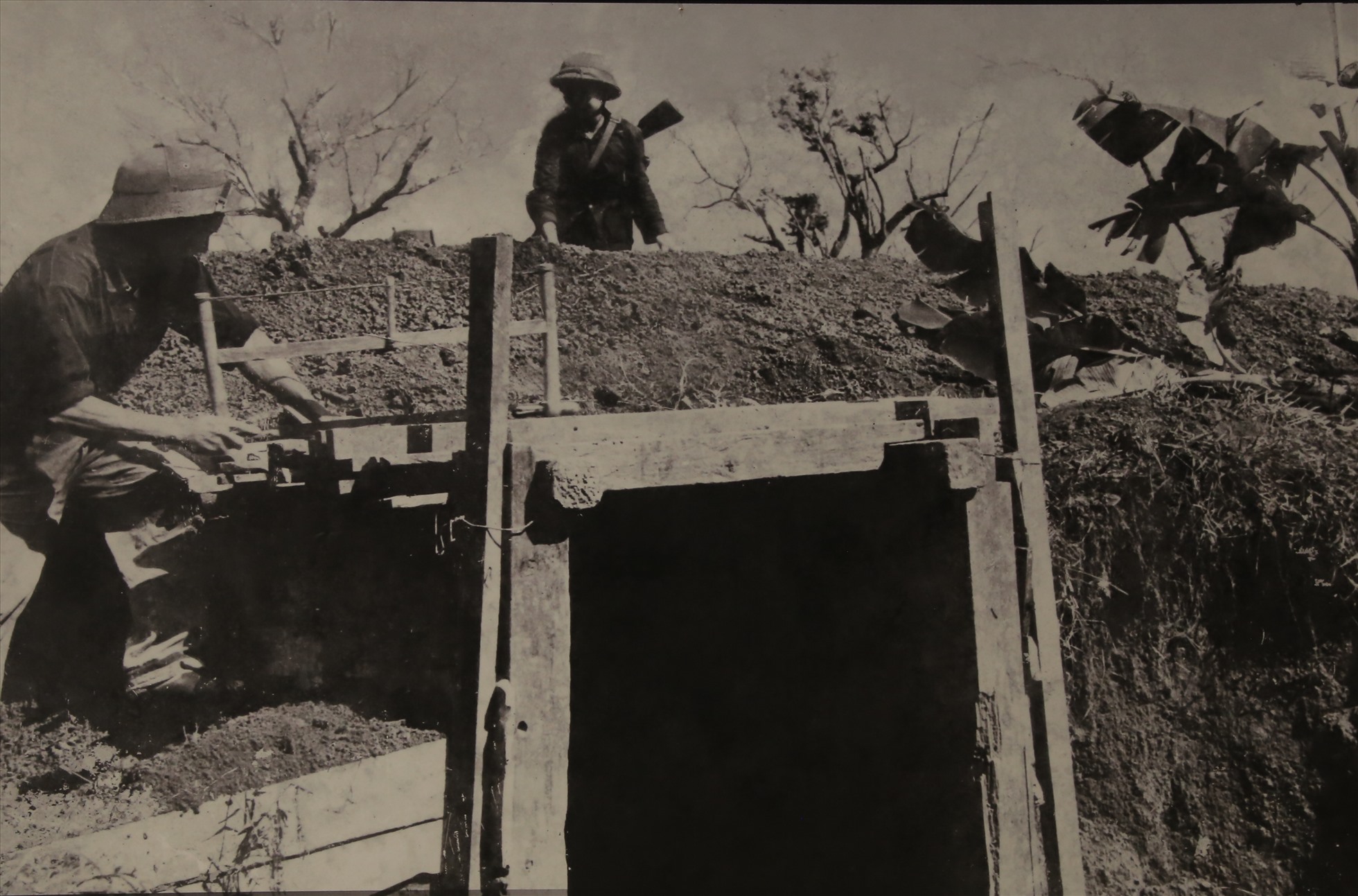
For nearly 2000 days and nights, they survived underground, with no casualties among the 600 residents, including 17 babies born during that time. By 1972, the people could leave their underground existence behind and rebuild their lives closer to nature, free from the darkness and fear of gunfire.
Exploring Vinh Moc Tunnels
Vinh Moc Tunnels are among 114 tunnels large and small dug throughout Vinh Linh district, totaling nearly 42 km in length.
The tunnels at Vinh Moc are constructed across 3 different levels connected via a main axis that stretches 870m, with a total length of nearly 2000m. They consist of 13 entrances: 6 leading up to the hilltop and 7 descending towards the East Sea, along with 3 ventilation shafts. Each tunnel entrance is reinforced with wooden columns to prevent collapse and erosion, oriented to facilitate airflow for ventilation.

The tunnel floor of Vinh Moc Tunnels is excavated more than 5m above sea level, with a slope ranging from 8 to 120 degrees from south to north and from west to east to facilitate drainage and prevent water buildup inside the tunnels.
- The first level, situated 12 to 15 meters below ground, served as living quarters for the civilian population.
- The second level, at a depth of 18 meters, housed the Party Committee, People’s Committee, and military command headquarters.
- The third level, 22 meters below ground, functioned as storage for supplies, food, and ammunition for Con Co Island and the residents within the tunnels.
Inside the tunnels, there is also an assembly hall used for meetings, performances, and film screenings, accommodating up to 50 people.
The tunnels have arched ceilings, with heights ranging from 1.2 to 1.8 meters. Alongside the main tunnel, small alcoves were carved out to accommodate 2-4 households for daily living.
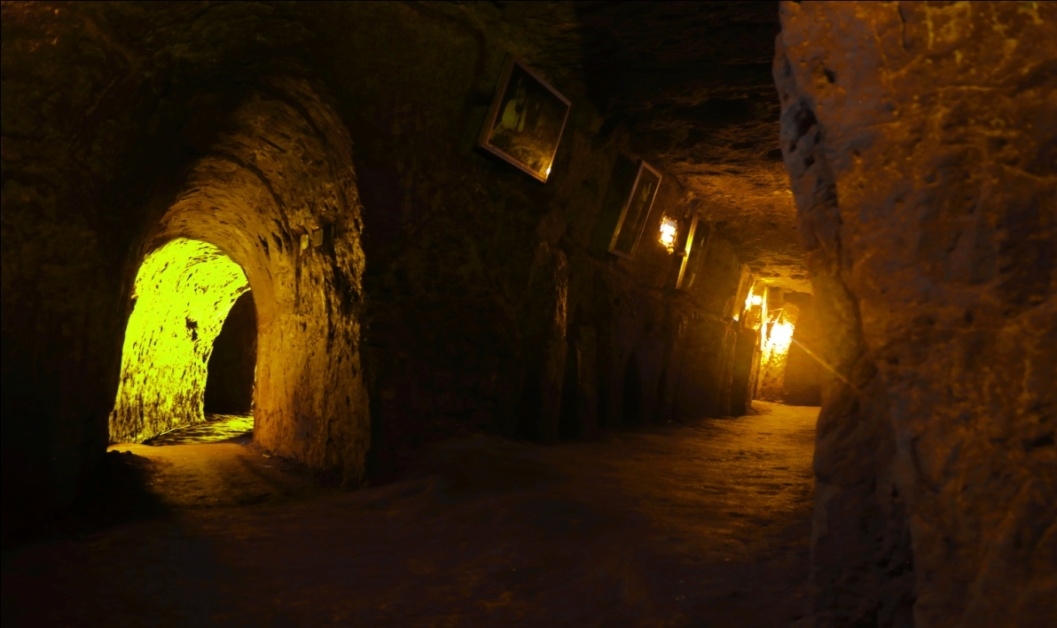
In addition to residential areas, the tunnels feature spaces for film screenings, cultural performances, bulletin boards, maternity wards, 3 water wells, toilets, guard posts, and an exit to the sea through gate number 4.
Visit the Exhibition House
Visitors can explore the Exhibition House, where historical artifacts including photographs, daily life items, and combat weapons from ancient times are displayed behind glass.
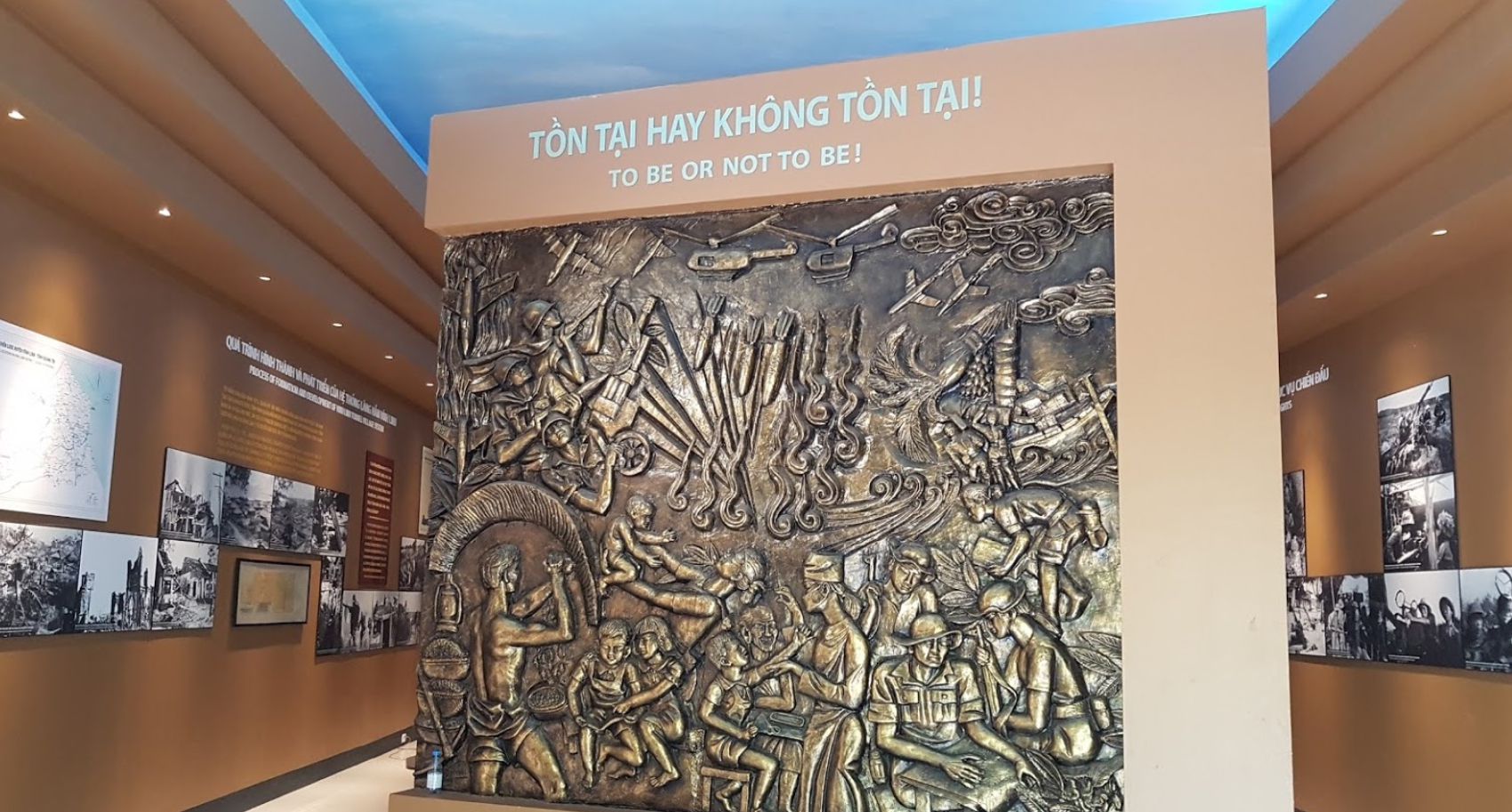
Bomb Shell Display Area
Located near the tunnel entrance, this area displays bomb shells of various sizes and types that were dropped during the intense warfare in Quang Tri province by the American Empire.
Conclusion
Vinh Moc Tunnels is a place deeply intertwined with the heroic history of our nation, a renowned landmark that bears witness to the true hardships of war, the fierce resilience, and the unwavering determination to protect our homeland. Visit this site once to witness firsthand, touch the artifacts, and gain a deeper understanding of a tumultuous era and experience the hardships faced by our ancestors during the war years

